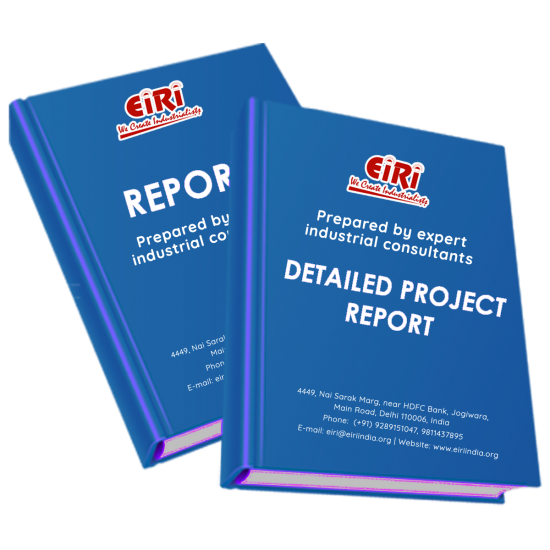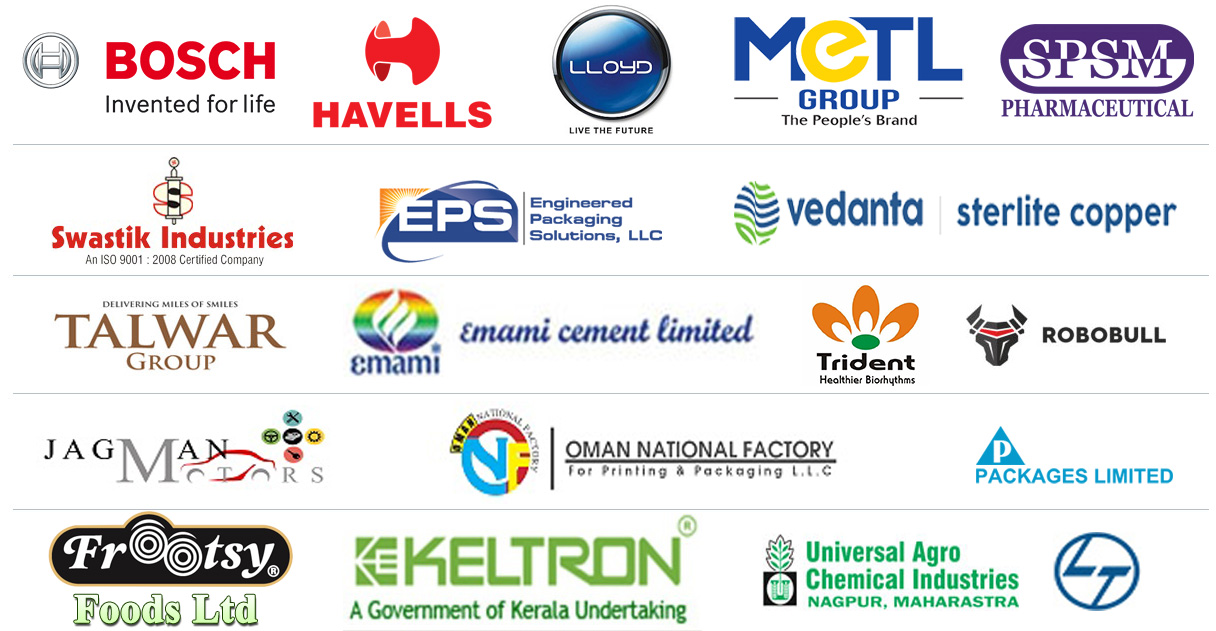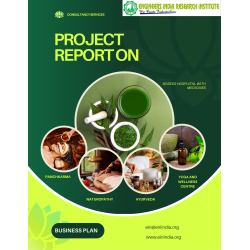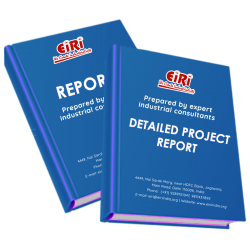Detailed Project Report on sorbitol from glucose

- More than 40 years of experience
- Managed by expert industrial consultants
- ISO 9001-2015 Certified
- Registered under MSME, UAM No: DL01E0012000
- 24/5 Research Support
Get your quesries resolved from an industry expert. Ask your queries before report or book purchase. - Custom Research Service
Speak to the our consultant to design an exclusive study to serve your research needs. - Quality Assurance
All reports are prepared by highly qualified consultants & verified by a panel of experts. - Information Security
Your personal & confidential information is safe & secure.
SORBITOL FROM GLUCOSE
[CODE NO. 3028]
Sorbitol, also known as glucitol, is a sugar alcohol with a sweet taste which the human body metabolizes slowly. It can be obtained by reduction of glucose, changing the aldehyde group to a hydroxyl group. Most sorbitol is made from corn syrup, but it is also found in apples, pears, peaches, and prunes. It is converted to fructose by sorbitol-6-phosphate 2-dehydrogenase. Sorbitol is an isomer of mannitol, another sugar alcohol; the two differ only in the orientation of the hydroxyl group on carbon 2. While similar, the two sugar alcohols have very different sources in nature, melting points, and uses.
Sorbitol a polyol (sugar alcohol) is a bulk sweetener found in numerous food products. In addition to providing sweetness, it is an excellent humectant and texturizing agent. Sorbitol is about 60 percent as sweet as sucrose with one-third fewer calories. It has a smooth mouthfeel with a sweet, cool and pleasant taste. It is non-cariogenic and may be useful to people with diabetes. Sorbitol has been safely used in processed foods for almost half a century. It is also used in other products, such as pharmaceuticals and cosmetics.
D-Soribitol, CH2OH (CHOH) 4CH2OH (D-glucitol, L-gulitol), is a hexahydric alcohol with a 6-carbon atom straight-chain that contains six hydroxyl gropups, and has a molecular weight of 182.17. It exists as a white, odorless, crystalline solid. Because of a negative heat of solution, sorbitol has a cooling effect when tasted. The hexitol has about two-thirds the sweetness of sugar.
Sorbitol was first isolated by the French chemist Joseph Boussingault in 1872 from the fresh juice of mountain ash berries. It has since been found in many natural products such as edible fruits (apples, plums, peaches, cherries, etc.), berries of mountain ash, hawthorn and Sorbus domestica, tobacco, algae, and red seaweed. In spite of its wide occurrence, natural materials are not a good commercial source of sorbitol, and it is made synthetically. The content of sorbitol in grapes is insignificant and advantage is taken of this situation by using a sorbitol assay of grape wines as a means of detecting adulteration with other fruit wines or apple cider.
A French chemist first discovered sorbitol in the berries of the mountain ash in 1872. It occurs naturally in a wide variety of fruits and berries. Today it is commercially produced by the hydrogenation of glucose and is available in both liquid and crystalline form.
COST ESTIMATION
Plant Capacity 15.00 MT./day
Land & Building (2 Acres) Rs. 4.15 Cr
Plant & Machinery Rs. 9.88 Cr
W.C. for 1 Month Rs.1.24 Cr
Total Capital Investment Rs. 15.61 Cr
Rate of Return 15%
Break Even Point 67%
INTRODUCTION
PROPERTIES
USES AND APPLICATIONS
B.I.S. SPECIFICATION
ANALYSIS OF SORBITOL
MARKET POSITION OF SORBITOL INDUSTRY
TREND IN PRODUCTION OF SORBITOL (70% BASIS)
CONSUMPTION PATTERN OF SORBITOL
EXPORT DATA OF SORBITOL (70%)
IMPORT DATA OF SORBITOL (70%)
IMPORT DATA OF SORBITOL POWDER
EXPORT DATA OF SORBITOL POWDER
FUTURE OUTLOOK
GLOBAL MARKET OF SORBITOL
LIST OF MANUFACTURERS OF SORBITOL
INTERNATIONAL MANUFACTURERS OF SORBITOL
SELECTED PRODUCER OF STARCH
MANUFACTURE OF SORBITOL FROM MAIZE STARCH
MANUFACTURING PROCESS
OF SORBITOL FROM GLUCOSE
PROCESS IN DETAILS
PROCESS FLOW DIAGRAM OF SORBITOL FROM GLUCOSE
CONVERSION OF LIQUID GLUCOSE/DEXTROSE INTO SORBITOL
PROCESS FLOW DIAGRAM FOR THE MANUFACTURE OF SORBITOL FROM MAIZE STARCH
PHOTOS FOR MAIN EQUIPMENTS:
OTHER COMMERCIAL METHODS
HYDROGENATION OF GLUCOSE TO SORBITOL OVER
NANOPARTICLE NI/AL2O3 CATALYST
SUPPLIERS OF PLANT AND MACHINERY
FILTER PRESS
SUPPLIERS OF RAW MATERIALS
COMPLETE PLANT AND MACHINERY SUPPLIERS
APPENDIX – A :
1. COST OF PLANT ECONOMICS
2. LAND & BUILDING
3. PLANT AND MACHINERY
4. FIXED CAPITAL INVESTMENT
5. RAW MATERIAL
6. SALARY AND WAGES
7. UTILITIES AND OVERHEADS
8. TOTAL WORKING CAPITAL
9. COST OF PRODUCTION
10. PROFITABILITY ANALYSIS
11. BREAK EVEN POINT
12. RESOURCES OF FINANCE
13. INTEREST CHART
14. DEPRECIATION CHART
15. CASH FLOW STATEMENT
16. PROJECTED BALANCE SHEET
How to Make Project Report?
Detailed Project Report (DPR) includes Present Market Position and Expected Future Demand, Technology, Manufacturing Process, Investment Opportunity, Plant Economics and Project Financials. comprehensive analysis from industry covering detailed reporting and evaluates the position of the industry by providing insights to the SWOT analysis of the industry.
Each report include Plant Capacity, requirement of Land & Building, Plant & Machinery, Flow Sheet Diagram, Raw Materials detail with suppliers list, Total Capital Investment along with detailed calculation on Rate of Return, Break-Even Analysis and Profitability Analysis. The report also provides a birds eye view of the global industry with details on projected market size and then progresses to evaluate the industry in detail.
We can prepare detailed project report on any industry as per your requirement.
We can also modify the project capacity and project cost as per your requirement. If you are planning to start a business, contact us today.
Detailed Project Report (DPR) gives you access to decisive data such as:
- Market growth drivers
- Factors limiting market growth
- Current market trends
- Market structure
- Key highlights
Overview of key market forces propelling and restraining market growth:
- Up-to-date analyses of market trends and technological improvements
- Pin-point analyses of market competition dynamics to offer you a competitive edge major competitors
- An array of graphics, BEP analysis of major industry segments
- Detailed analyses of industry trends
- A well-defined technological growth with an impact-analysis
- A clear understanding of the competitive landscape and key product segments
Need Customized Project Report?
- Ask for FREE project related details with our consultant/industry expert.
- Share your specific research requirements for customized project report.
- Request for due diligence and consumer centric studies.
- Still haven't found what you're looking for? Speak to our Custom Research Team
About Engineers India Research Institute:
Note: We can also prepare project report on any subject based on your requirement and country. If you need, we can modify the project capacity and project cost based on your requirement.
Our Clients

Our Approach
- Our research reports comprehensively cover Indian markets (can be modified as per your country), present investigation, standpoint and gauge for a time of five years*.
- The market conjectures are produced on the premise of optional research and are cross-accepted through associations with the business players
- We use dependable wellsprings of data and databases. What's more, data from such sources is handled by us and incorporated into the report
Why buy EIRI reports?
- Our project reports include detailed analysis that help to get industry Present Market Position and Expected Future Demand.
- Offer real analysis driving variables for the business and most recent business sector patterns in the business
- This report comprehends the present status of the business by clarifying a complete SWOT examination and investigation of the interest supply circumstance
- Report gives investigation and top to bottom money related correlation of real players/competitors
- The report gives gauges of key parameters which foresees the business execution























